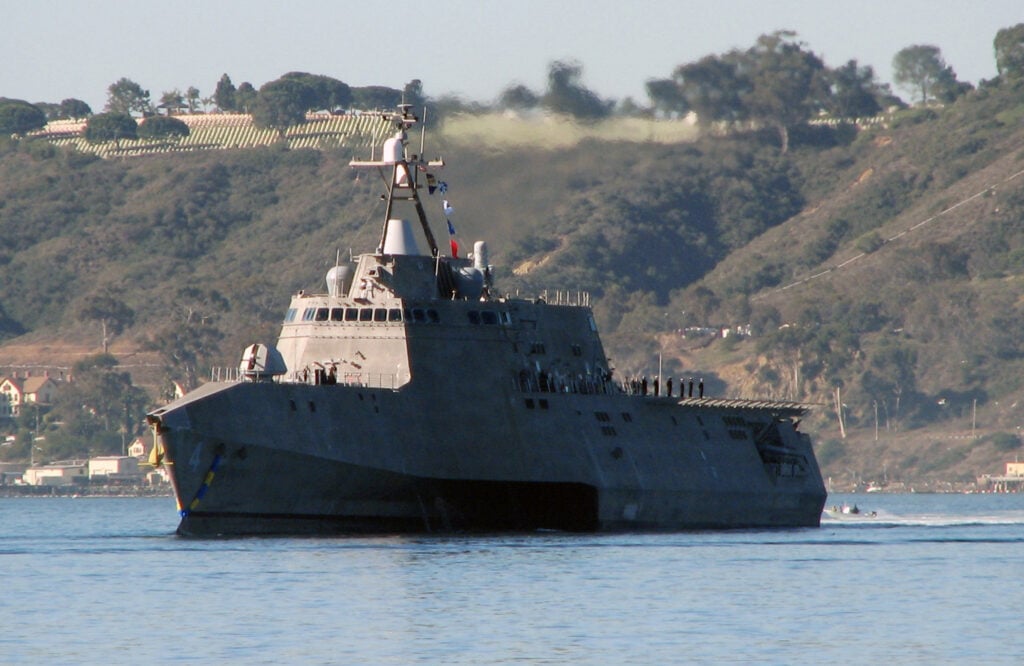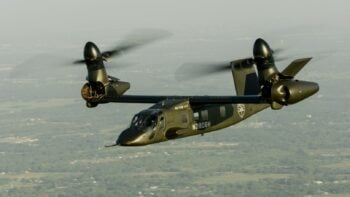
LCS-4 Coronado
UPDATED from Hill staff briefing CAPITOL HILL: The House seapower subcommittee continued its crusade for more warships, adding vessels and relentlessly rejecting reductions in its draft portion of the annual defense policy bill. The full committee will mark up all draft language for the 2017 National Defense Authorization Act next week.
As we’d predicted, the bill rejects two major proposals from the Navy budget that the administration proposed in February. HASC says “no” to deactivating the tenth carrier air wing — a proposal it saw as prelude to a carrier fleet stuck at ten flattops forever. (Because one carrier is in long-term overhaul at any given time, there is traditionally one more carrier in the fleet than carrier air wings).
HASC also says “no” to taking 11 aging cruisers out of service for a slow-motion modernization — a proposal it sees as a disguised retirement. To prevent a de facto mothballing of the ships, the bill also requires the Navy to buy upgrades for them.
The bill also says “no” to cutting the Littoral Combat Ship, at least this year. The HASC would add a new LCS ship instead of just the two the administration requested. The third LCS would provide enough to keep both shipyards in business — Marinette in Wisconsin and Austal in Alabama — until the Navy holds a winner-take-all competition between them to produce the upgraded frigate version of LCS.
Overall, Defense Secretary Ash Carter has ordered the LCS program cut from 52 ships to 40: HASC can’t legislate on the long-term cuts in this year’s bill, but committee staff told reporters that it would include a statement endorsing the 52 figure.
The bill even says “no” to retiring the aging Avenger-class minesweepers until the Navy certifies the adequacy of their successors — which happen to be LCS variants equipped with a much-delayed Mine Counter-Measures (MCM) module.
More positively, the bill adds an additional amphibious ship to carry Marines, the long-awaited LPD-29. (The bill gives the Navy flexibility to buy first of the follow-on L(X)R class instead). And in non-binding language — various “sense of Congress” statements and reports — it urges the Navy
- to buy new aircraft carrier fasters (every four years instead of every five) to restore the fleet to 11 flattops,
- to double the production of T-AO(X) oilers from one a year to two, and
- to buy two Virginia-class attack submarines every year, even in years when the Navy must also buy a much larger Ohio Replacement nuclear missile boat.
The bill also boosts the special National Sea-Based Deterrent Fund (NSBDF) created to pay for the staggeringly expensive Ohio Replacement Program. In particular, it adds a new authority for “continuous production” to allow the Navy to keep buying, and contractors to keep producing, key components of the submarine at a steady rate throughout the life of the program, rather than having production tied to individual submarines, which could cause inefficient surges and stalls. The continuous production authority will initially be used for the submarines missile tubes but could be applied to a range of other components, Hill staff said,
In an interesting “yes, but….,” the mark-up praises the Pentagon for finally moving ahead on the much-delayed program for a carrier-launched drone, formerly called UCLASS. But it urges the military to make the aircraft fully capable of strike missions, not just the refueling and reconnaissance roles emphasized in the current concept, CBARS.
Army wraps up FLRAA PDR, incorporating special ops design changes
According to a SOCOM official, the Army included feedback from the command that led to design changes like hardware for a refueling probe and features that will enable special operators to make unique modifications.



























